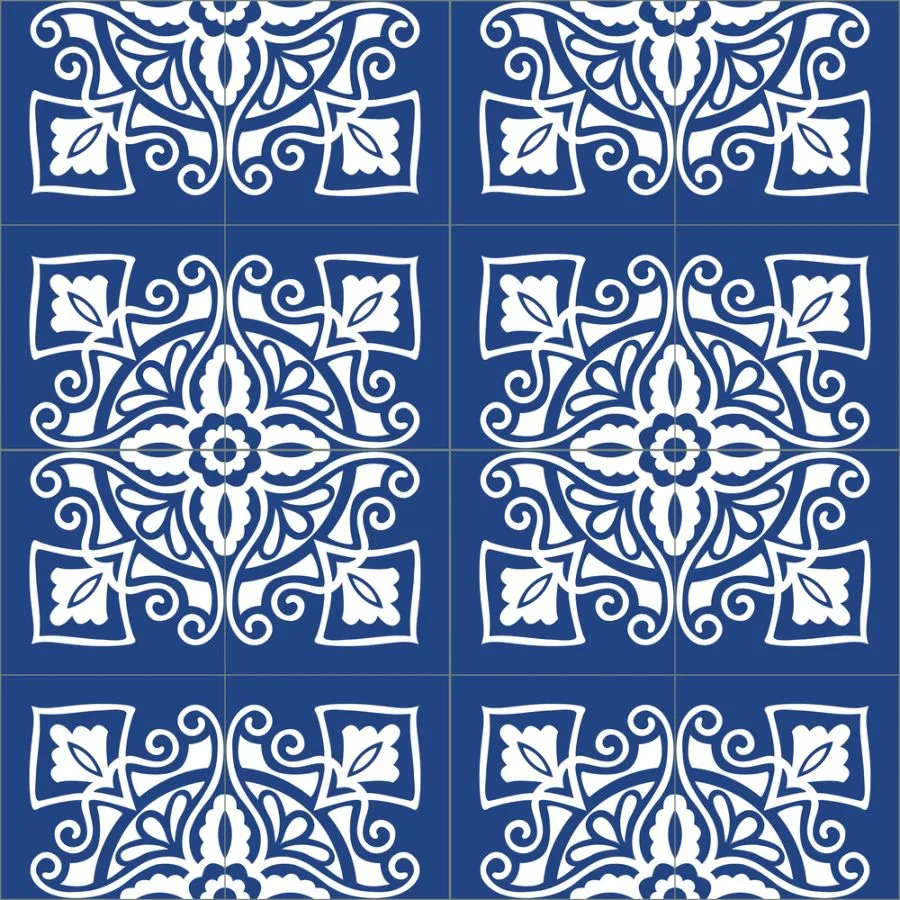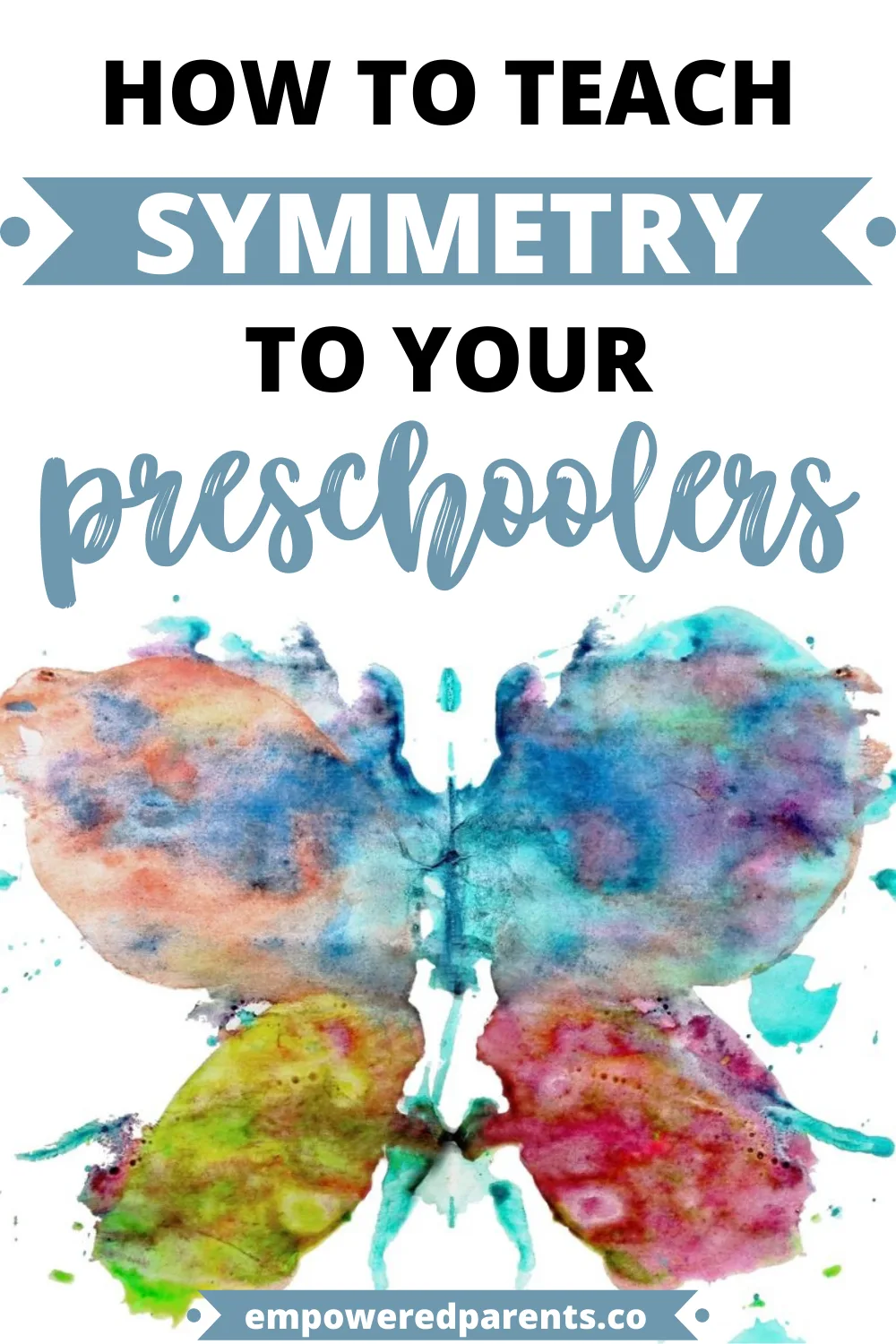Symmetry can be quite an abstract concept for young children to understand. To grasp it, they need to see the symmetry that is all around them in the world, explore symmetry art activities and play.
At this stage, you’ll want to expose children to the idea, show them it exists and let them have fun with it, without expecting them to produce symmetrical pictures or fully understand it.
Symmetry is a part of geometry and can therefore be introduced in early childhood, which will build early maths skills.
These 10 symmetry activities are simple and use real, practical examples kids can understand.
1. What’s Wrong with this Picture?
The best way to get children to understand something is to make it relevant to their own lives.
They are egocentric so they will connect with things that are about them.
A child’s body is the first example of symmetry in their own life. Start with the face for this activity.
Draw a sketch of a face with all the features muddled up – eyes that are not in line, one big ear and one small ear, a mouth that’s not centred, etc.
Ask “what’s wrong with this picture?” and together, find all the problems in the picture and re-draw it more accurately.
Use the activity to introduce the idea that your face has an imaginary line down the centre and that the two sides look almost the same.
2. Discuss Symmetry
Use the face activity as a starting point for a discussion about symmetry.
Introduce the word symmetry and explain that some things are symmetrical, which means that they are like a mirror image of each other.
Kids can imagine a line going down the centre of an object and see if the two sides look alike.
Discuss the human body and get kids to draw an imaginary line with their fingers going down the middle of their own bodies.
Ask questions such as:
- What do you find on both sides of the body?
- Is one of your arms longer than the other?
- Do you have the same number of toes on each foot?
- If you were to fold your body in half, would the sides match?
- What if you folded in half at the waist? Does the top of your body look like the bottom?
Go from a discussion into either looking for more examples in nature or finding them in books and pictures.
3. Symmetry in Pictures
Search for examples of symmetry in picture books or picture cards.

Search online for images of symmetry in nature.
A butterfly is always a good example of symmetry to show children as the patterns on the wings are a mirror image of each other.
Children will enjoy finding symmetry in familiar animals and plant life such as leaves, dragonflies, starfish, flowers, moths, cats, crabs and snowflakes.

4. Symmetry in Nature
Go on a walk outside and search for real examples of symmetry.
Look at leaves, branches, bricks, flowers and other objects.
Discuss whether these items have an imaginary line dividing two matching halves.
For items that can be folded in half, this is the most practical way to “see” symmetry.
Look at indoor objects too, such as vases, floor tiles or any other objects that have symmetrical patterns.

5. Paper Plate Faces
Get kids to make their own paper plate faces.
Provide paper plates, liquid glue and materials for the features of the face, such as pieces of coloured paper, buttons, pom-poms, markers, strips of fabric, etc.
Encourage kids to space the eyes and ears carefully on the face and to position the nose and mouth centrally.
Don’t worry too much about precision – just let kids think about the process of planning where to glue the materials.
6. Body Symmetry
For this activity, you’ll need a large roll of paper and some markers.
Roll out the paper on the floor and lie kids down on it so their whole body is on the page.
With a marker, trace around just one side of the body. Kids must then draw in the other half of their bodies – arms, legs, head, etc.
They can then add features and clothing, taking care to make the left and right sides symmetrical.
This activity is also great for body awareness.
7. Butterfly Painting
There is no more beautiful example of symmetry in nature than the wings of a butterfly.
Painting one also makes for a great preschool symmetry activity.
Show children some examples of butterfly wings so they can see how rich they are in colour and pattern.
Provide a large paper cut-out of a butterfly, folded down the centre.
Get kids to paint only one side of the wings. They can use different colours and create various patterns.
Then, fold the wings together, press gently and see how the paint transfers to the other side of the wings and reproduces the pattern.

This is a great way to physically experience what a mirror reflection is.
8. More Mirror Paintings
Try the butterfly activity with different shapes and images.
Provide large shapes and let kids experiment on their own. They could use large A4 sheets of paper or cut-outs like hearts.
They can have fun painting all kinds of patterns on one half of their shape, then fold them and see the results.
9. Paper Folding
Spend some time exploring shapes and whether they have a line of symmetry.
Give children cut-outs of all kinds of shapes – circles, ovals, rectangles, hearts, diamonds – and get them to fold them and see if they fold perfectly down the middle and if the sides match up.
This will help them develop the ability to find the line down the middle.
Give some complex shapes such as pentagons and hexagons, and some random shapes that don’t fold down the centre.
Paper folding is also great for building fine motor skills at the same time.
The point of this activity is to explore the properties of shapes – there does not need to be any result.
Kids can use these shapes later in a shape collage, or an art activity.
10. Symmetry with Loose Parts
Make symmetrical constructions and patterns with any kind of loose parts.
You can use pegboards to create a pattern, or any items such as blocks, beads or Legos. Even waste materials such as bottle tops will work.
Let kids freely create an image and then show them how to create a mirror reflection of the image.
It can help to physically draw or mark out a midline, then create the pattern on the left and mirror it on the right.
This can be tricky to understand at such a young age. If a pattern consists of a red and then a yellow block, on the other side it begins with the yellow block, then the red one.
Preschoolers may not yet be able to reproduce such a pattern so just let them explore the idea.
These are just a few ideas of symmetry for preschoolers. Use these to think of other ways to find symmetry and have fun with it.

